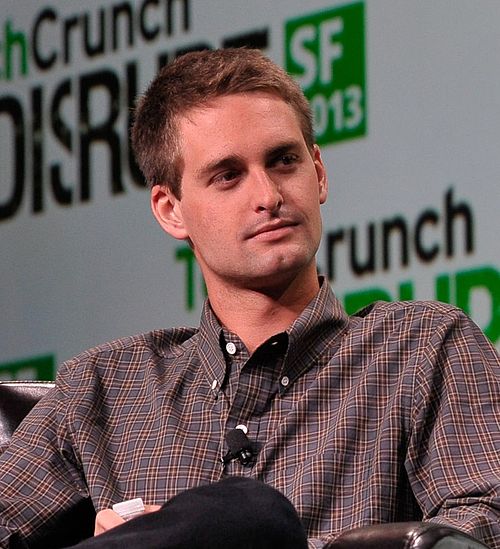In November 2013, a 23-year-old college dropout named Evan Spiegel flew to Los Angeles for a secret meeting with Mark Zuckerberg, the 26-year-old CEO of Facebook, then valued at $104 billion. Zuckerberg had an offer on the table: $1.5 billion in cash to acquire Snapchat, a two-year-old app with zero revenue. Most would have jumped at the chance. Spiegel didn’t. He rejected the offer outright—and later turned down an even larger $3 billion proposal in 2014. Wall Street called him arrogant. Zuckerberg went into “war mode.” Yet, by 2023, Snapchat’s market cap had soared to $45 billion, proving Spiegel’s vision was worth fighting for.
This is the story of how one rejection changed the trajectory of the tech industry—and the lessons it holds for entrepreneurs today.
The Setup: A David vs. Goliath Moment
In 2013, Snapchat was a scrappy startup run by college dropouts. The app, known for its disappearing messages, had no revenue stream but was gaining traction among a key demographic: young users. Behind the scenes, Spiegel had data that gave him confidence:
- 350 million snaps sent daily.
- 71% of users were under 25.
- The average user opened the app 18+ times daily.
Most crucially, Snapchat was capturing teen users at a time when Facebook was losing them—a trend Zuckerberg couldn’t ignore. As Ricardo (@Ric_RTP) notes in his X thread, “Facebook was LOSING teen users precisely when Snapchat was gaining them.” Zuckerberg saw the threat and made his move: a $1.5 billion offer to buy Snapchat.
Spiegel didn’t even let Zuckerberg finish his pitch. He said no.
The Backlash: “The Height of Tech Arrogance”
Spiegel’s rejection stunned the tech world. Wall Street analysts were brutal, labeling his decision “the height of tech arrogance” and “a decision he’ll regret forever.” Even Snapchat’s own board panicked when Zuckerberg came back with a $3 billion offer in 2014. But Spiegel wouldn’t budge.
Zuckerberg, furious, shifted gears. Within weeks, Facebook launched Poke, a blatant Snapchat clone. The message was clear: “Sell to us, or we’ll copy you out of existence.” When Poke failed, Zuckerberg doubled down, cloning Snapchat’s features across all of Facebook’s platforms:
- Instagram Stories (launched in 2016, a direct copy of Snapchat Stories).
- WhatsApp Status.
- Messenger Day.
- Facebook Stories.
As Ricardo points out, Zuckerberg’s strategy was to “suffocate the upstart” by leveraging Facebook’s massive 1.3 billion user base and unlimited resources against Snapchat’s 50 million users and limited runway.
The Pressure Mounts: A “Disastrous” Redesign and Fierce Competition
By 2017, Snapchat’s growth stalled. Tech media declared Spiegel had made “the biggest mistake in tech history.” The pressure intensified in 2018 when Snapchat rolled out a controversial app redesign:
- 1.2 million users signed a petition to revert the changes.
- Kylie Jenner tweeted she was done with the app, causing a 7% stock drop (a $1.3 billion loss in a single day).
Meanwhile, competition grew fiercer. Instagram hit 500 million daily users in 2019, TikTok exploded globally in 2020, and YouTube launched Shorts in 2021. Many predicted Snapchat’s imminent demise.
But Spiegel had a different vision—and he was playing the long game.
Spiegel’s Vision: Betting on AR, Privacy, and Young Users
While Zuckerberg focused on copying Snapchat, Spiegel doubled down on innovation. He rebranded Snapchat as a “camera company” and focused on areas Zuckerberg overlooked:
- Real friendships over broadcasting: Snapchat prioritized private, ephemeral messaging over the viral, public posts that dominated Facebook and Instagram.
- Privacy over virality: As web search result [1] notes, Snapchat’s servers automatically delete chats after they’ve been viewed, a novel approach that resonated with teens and young adults.
- Augmented Reality (AR) over Virtual Reality (VR): While Meta chased VR with the Oculus, Snapchat invested in AR, launching products like Spectacles and AR filters.
- Young users over aging demographics: Snapchat stayed laser-focused on its core audience—Gen Z and Millennials—while Facebook’s user base aged.
Spiegel also ventured into original content and hardware, betting that social media was just the beginning of visual communication. As he said during the 2018 redesign backlash, “The risk will pay off later.”
The Turnaround: Snapchat Thrives Against All Odds
Spiegel’s gamble paid off. By April 2023, Snapchat had:
- 750 million monthly active users.
- A stock price 10x its IPO low.
- A market cap of $45 billion.
- Annual revenue of $4.6 billion.
Spiegel’s personal stake? Worth far more than Zuckerberg’s original $1.5 billion offer. Snapchat didn’t just survive—it thrived. Web search result [1] confirms Snapchat’s continued relevance, noting that by 2024, the platform had grown to 800 million monthly active users, with daily active users increasing from 414 million in Q4 2023 to 422 million in Q1 2024.
Snapchat’s growth in Europe tells a similar story. A chart from Ricardo’s thread shows daily active users in Europe climbing steadily from 20 million in 2014 to nearly 100 million by 2023. Meanwhile, a stock performance graph highlights Snap Inc.’s 240.3% price change compared to Twitter’s 80.6% over a similar period.
The Bigger Picture: Zuckerberg’s Blind Spot
While Zuckerberg was busy trying to crush Snapchat, he missed a larger threat: TikTok. As Ricardo notes, “The obsession with killing their rival blinded [Meta] to new threats.” TikTok’s rise caught Meta off guard, while Snapchat quietly solidified its position as a cornerstone of youth culture and AR innovation.
Instagram’s VP of Product, Kevin Weil, later defended the cloning strategy, saying, “This is the way the tech industry works,” as reported in web search result [2]. But Spiegel’s story shows that innovation, not imitation, often wins in the long run. While Instagram copied Snapchat Stories to great success (earning significant ad revenue), Snapchat carved out a unique niche that kept it relevant.
Key Lessons for Entrepreneurs
Spiegel’s journey offers timeless lessons for founders and visionaries:
- Sometimes Refusing Acquisition Is the Right Move: Spiegel turned down life-changing money because he believed in his vision. That conviction paid off.
- Your Biggest Competitor Will Likely Try to Copy You: Zuckerberg’s cloning strategy is a reminder that giants will try to replicate your success. Stay ahead by innovating.
- Growth at All Costs Isn’t Always the Answer: Snapchat prioritized user experience and privacy over aggressive expansion, which helped it retain its core audience.
- The Crowd Is Often Wrong About Long-Term Vision: Wall Street and the media doubted Spiegel, but he trusted his instincts—and proved them wrong.
As Ricardo concludes, “The billion-dollar decision often isn’t about money. It’s about conviction in your vision when everyone else thinks you’re wrong.”
Snapchat Today: A Lasting Legacy
Today, Snapchat remains a major player in the social media landscape. Web search result [1] highlights its appeal to younger generations, with a near-even gender split (49.1% female users) and 29% of users checking the app multiple times a day. The platform’s focus on Stories, filters, and ephemeral messaging continues to resonate with teens and young adults—a demographic advertisers can’t afford to ignore.
Spiegel’s “mistake” now looks like genius, not because the path was smooth, but because he understood a profound truth: some visions are worth fighting for, even when the world tells you you’re wrong. In rejecting Zuckerberg’s billions, Spiegel didn’t just save Snapchat—he redefined what it means to bet on yourself in the cutthroat world of tech.
Sources
- X Thread by Ricardo (@Ric_RTP), posted on April 18, 2025.
- “Snapchat CEO Evan Spiegel’s $3 Billion Rejection Letter to Facebook’s Mark Zuckerberg,” Mic.com, November 14, 2013.
- “21 Snapchat Statistics Marketers Need to Know in 2024,” Socialflyny.com, August 13, 2024.
- “Instagram on Copying Snapchat: ‘This Is the Way the Tech Industry Works,’” TechCrunch, May 5, 2024.










